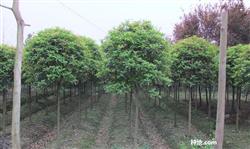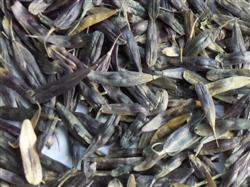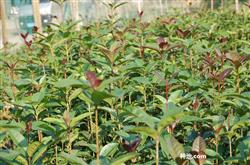What problems should be paid attention to in the transplantation of sweet-scented osmanthus trees?

What problems should be paid attention to in the transplantation of sweet-scented osmanthus trees? Please guide 1. Prepare before transplanting within a certain period of time before transplanting, determine the range of the root when transplanting according to the size of the crown, and the root-breaking circle is not less than the crown's 1 inch, 3 cycles, 1 inch, 2. Second, the transplanting of sweet-scented osmanthus trees must bring mud balls, the size of which is very important, large is a waste of cost, small is affecting survival, mud ball diameter is generally about 8 times of the trunk diameter. After the tree with mud ball is dug out in the original growth place, the mud ball with root system is wrapped with grass rope and bundles on the spot, together with the root neck, and the mouth is closed on the trunk. Big trees without mud balls should trim their wounds smoothly and beat them to protect their roots. After completion, cover with topsoil to restore and water thoroughly. Start digging in the third year. Third, when hoisting, transportation and hoisting, the focus of the trees should be wrapped with hemp or cloth, and the periphery should be protected by wooden strips, so that the hook will not be in direct contact with the trees to avoid damage to the bark, and the focus should be on the middle and lower parts of the trees. when hoisting, try to avoid sloshing back and forth, reduce bruises on branches and leaves, and avoid loose clumps. For trees with large crowns, they should be tied up with ropes to tighten the crown to prevent damage. Before the transportation of big trees, spray branches and leaves with water to moisturize them. If they are transported over a long distance, they should be covered with felt cloth to minimize the evaporation of water in the trunk and leaves during transportation. The interior of the transport vehicle needs to be lined, and the trees should be placed lightly on the backing, with the roots forward and the crown facing back as far as possible, so as to avoid upwarping and breaking the branches due to the headwind. Fix it with a rope to reduce sloshing in transit and pay attention to safety. When unloading trees, get as close to the planting hole as possible, if it can be hoisted and sent to the planting hole at one time. 4. planting and maintenance of sweet-scented osmanthus trees requires that the planting hole excavated before planting is larger than the root system or soil mass, so that there is a certain distance between the soil mass and the periphery of the planting hole, so that more soft fertilizer soil can be filled after planting, which is conducive to rooting. 1) straighten trees: after planting, sweet-scented osmanthus trees must be placed upright, so that the trunk is perpendicular to the ground, especially the trees with large crowns are difficult to move and adjust later, so they should be in place at once. 2) wrapping the trunk: in order to reduce the evaporation of water in the trunk and maintain the humidity of the trunk, wrap the trunk closely from the base of the trunk with a moist grass rope, then cover the rope with clay mud, and then spray water with a sprayer to keep the tree wet. 3) standing support column: a big tree must set up a pillar, which is mainly supported by a triangle, and the support column should be buried in the soil, and large stones should be buried at the foot of the support column to prevent subsidence. The supporting posts of the big tree should be propped up before the soil is cultivated to prevent the tree from askew. A soft material liner is used when binding the tree trunk above the support column. At the same time, the top of the three support columns should be fastened, and the waist turn can be added if necessary. The pillar can choose shirt wood material, also can choose steel pipe, the tree with large crown had better choose steel pipe. 4) build a shade shed: after the tree is planted, a shade shed is built above the tree crown. The shade shed can be built with bamboo or steel pipe, and the scaffolding is covered with a sunshade net. According to the shading degree of tree species to choose different density of shading net, broad-leaved trees should choose shading net with better shading degree. 5) watering and fertilizing : watering should follow the principle of not drying and watering, but watering thoroughly. Especially in summer, it is necessary to spray water on the ground and canopy, and if necessary, add potassium dihydrogen phosphate or 0.3% urea solution to fertilize outside the root. In order to promote the rooting of big trees, apt rooting agent was added at the initial stage of planting. In order to restore the tree potential as soon as possible, base fertilizer should be applied once in the autumn of the first year after transplanting. Fertilize 2-3 times in early spring and autumn in the second year, and topdressing outside the root if necessary. Click to get more sweet-scented osmanthus planting techniques
- Prev

mint blight
Banlangen seeds have a life span of 2 years, more than 2 years after the seeds do not germinate, even if a small part of germination, after a long time will die, said "do not establish seedlings", so you should try to buy new seeds. General new production of Isatis seeds (also known as large green seeds) appearance color blue black, good gloss, shiny, fragrance is stronger,...
- Next

How do sweet-scented osmanthus trees sow and raise seedlings?
How do sweet-scented osmanthus trees sow and raise seedlings? Please guide sweet-scented osmanthus generally to use cutting to raise seedlings, and single-stem sweet-scented osmanthus to use sowing to raise seedlings, now introduced as follows: 1. The sweet-scented osmanthus blossoms from September to October and the fruit ripens from late March to late April the following year. When the fruit enters the ripening stage, the pericarp changes gradually from green to purplish black.
Related
- Fuxing push coffee new agricultural production and marketing class: lack of small-scale processing plants
- Jujube rice field leisure farm deep ploughing Yilan for five years to create a space for organic food and play
- Nongyu Farm-A trial of organic papaya for brave women with advanced technology
- Four points for attention in the prevention and control of diseases and insect pests of edible fungi
- How to add nutrient solution to Edible Fungi
- Is there any good way to control edible fungus mites?
- Open Inoculation Technology of Edible Fungi
- Is there any clever way to use fertilizer for edible fungus in winter?
- What agents are used to kill the pathogens of edible fungi in the mushroom shed?
- Rapid drying of Edible Fungi

